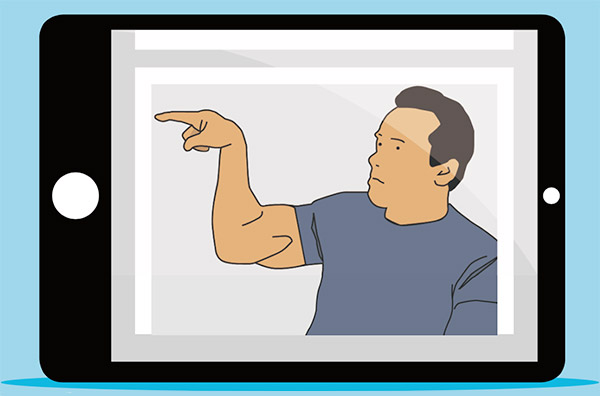Does flexing build muscle or is it the height of vanity? The scientific literature may have validated every muscle you’ve ever flexed that wasn’t under tension in the weight room.
Don’t be ashamed to subtly to show off your freshly acquired gains by having a cheeky flex. Make sure that arm is flexed at 90 degrees, bro.
Does flexing build muscle?
Walking by a car and catch your reflection in the window? Adjust that posture, bud, and be sure you’re looking your buffest.
To non-gym goers, you likely seem a little weird and narcissistic but here’s the scientific excuse (ahem…‘explanation’) to keep at it.
A paper submitted to the European Journal of Applied Physiology measured whether flexing built muscle and the results were interesting, to say the least.
In the study, sixteen young men were allocated to a training group or a control group that went about their day as normal.
The training group was provided a training program for 3 days per week, which consisted of a 4-second maximal voluntary contraction of the elbow flexors (biceps) and extensors (triceps) by simultaneously flexing both muscle groups at 90 degrees of the elbow joint. This was then followed by 4 seconds of muscle relaxation.
The group had to do repeat this for 10 repetitions and perform 5 sets on their workout day for 12 weeks.

By the end of the 12 weeks, the results were outstanding. The group that had simply flexed as their training for 12 weeks had increased thickness of their biceps and triceps. Both increasing by a not-to-be-sniffed-at 4% each.
Even more amazing was the increased maximal contraction ability of the participants’ muscles. They could contract their biceps 15% harder and triceps, a sleeve-busting, 46% harder.
Unfortunately, the control group who were ordered to do nothing didn’t really help us come to any conclusions about how flexing compares to working out with weights.
It’s probably a safe assumption that the higher tension you’re able to provide your muscles with weight training would win out, but it would have been interesting either way.
Regardless, what’s stopping you from doing both? Having a flex between workouts or even in between sets, can’t hurt (unless you’re flexing so hard that it compromises your next working set at the gym.)
Don’t want to flex? Come on, just think about it…
If you’re not the type to pout and hit your best front double biceps pose when you catch your reflection in a store window, you could get by just thinking about flexing.
In one of the more remarkable studies in existence, the Ohio University immobilized participant’s wrists in a cast and split the group in half. One group were then asked to think about flexing their muscles for 10 minutes a day through the cast, while the other half were asked to be do nothing.
Miraculously, when the casts were removed, the group that thought about flexing had twice as strong wrist muscles compared to the group who did nothing.
Flexing, and even thinking about it, creates stronger neurological pathways, so you’ll swiftly get back to full strength when you’ve shaken off your injury and re-entered the house of iron.
In gym-bro terms that’s the mind-muscle connection taking hold so keep flexing and even when you’re not, make sure you’re thinking about those gains.
In summary, does flexing build muscle? It certainly appears so based on the scientific literature. While probably not going to replace the weight room, it certainly does provide muscular and neurological benefits.
Hey, if it was good enough for Arnold, it’s good enough for us.
For more articles on training, nutrition tips, interviews and supplements, get TRAIN magazine direct into your inbox every month for free by signing up to our newsletter
References:
https://www.ncbi.nlm.nih.gov/pmc/articles/PMC4269707/ – The power of the mind: the cortex as a critical determinant of muscle strength/weakness
https://www.ncbi.nlm.nih.gov/pubmed/24368554 – Neuromuscular adaptations following 12-week maximal voluntary co-contraction training.







